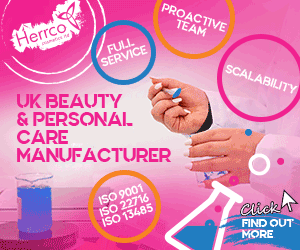
Giulio Pirotta
Giulio Pirotta has more than 30 years of experience as a professional consultant, technical manager and regulatory expert for cosmetic companies.
He is also a board member and regulatory officer of the Italian Society of Cosmetic Chemists and a member of the Society of Cosmetic Chemists. He is also an American Chemical Society law court expert and a member of MENSA International.
Here he explains to Cosmetics Business how to navigate the Italian beauty industry.
"More than 60% of make-up in the world is created in Italy, making the European country a major industry player and one of the top cosmetics manufacturers.
The main framework for Italian cosmetics manufacturers is, of course, the European Regulation 1223/09/CE and 655/13/09, but where does the country differ?
The main national authority in Italy is the Ministry of Health (MOH) which is aided by different bodies: the Italian Institute of Health (for technical and analytical issues), NAS - Comando Carabinieri per la Sanità (the military police force for preventing crime that may endanger public health), the Customs Health offices and regional official structures.
Before the current EU regulations came into force, a manufacturer had to notify the MOH and an appointed technical director, but this is no longer the case – instead Italian firms are managed by the regional authorities.
For example, in some regions official guidelines for inspections have been published in order to help cosmetics companies and officials.
Approximately every two years each company is checked in order to verify compliance to Good Manufacturing Practice rules.

On the inside
For brands entering the Italian market, it is useful to have the product checked by a local expert to help prevent later issues. If an order of withdrawal is issued by the police this must be executed immediately.
In same cases brands and manufacturers may face prison. Breach of Regulation 1223/09/CE and the decreto legislativo [statutory instrument] 4/12/2015, n. 204, for example, is punishable with a prison sentence.
For example, anyone who owns or markets a product harmful to human health may be sentenced to one to five years in prison.
It’s six months to two years for manufacturers that use forbidden substances, or for those who are in violation of CMR Substances, as set out in Annex II.
All provisions referred to in the European regulations are confirmed in the Italian law, but attention must be given to (yet is sometimes not considered) the label translation into Italian and misleading claims.
Aside from the usual misleading advertising claims check (The Italian Competition Authority AGCM) some product claims may be regulated by the MOH under the rules of regulation 655/13/CE.
In this area, as stated by the European Court of Justice, context should be considered when developing labels and claims, for example in Italy ‘anti-cellulite’ is regarded as medical treatment rather than a cosmetic.
When looking at a product in its entirety and its manufacturing process, Italy does have a lot of burdens related to specific rules for waste, workforce, taxes and premises.
But this shouldn’t be a deterrent, generally speaking, as the rules governing cosmetic products are similar to the rest of Europe."




